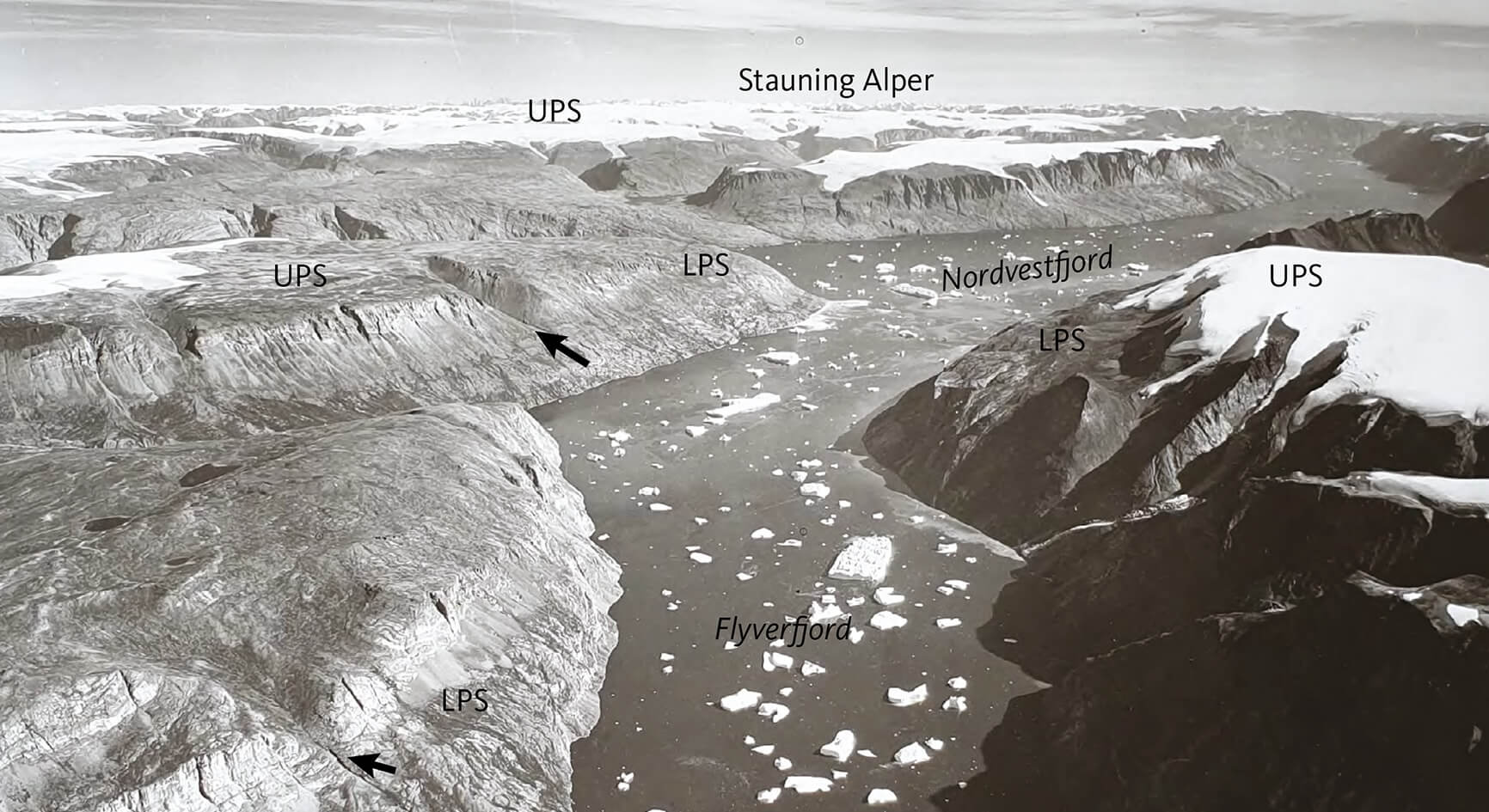
How to Cite
Share
Abstract
The geology of North-East Greenland (70–78°N) exposes unique evidence of the basin development between the Devonian collapse of the Caledonian Orogen and the extrusion of volcanics at the Paleocene–Eocene transition during break-up of the North-East Atlantic. Here we pay special attention to unconformities in the stratigraphic record – do they represent periods of stability and non-deposition or periods of subsidence and accumulation of rocks followed by episodes of uplift and erosion? To answer that and other questions, we used apatite fission-track analysis and vitrinite reflectance data together with stratigraphic landscape analysis and observations from the stratigraphic record to study the thermo-tectonic history of North-East Greenland. Our analysis reveals eight regional stages of post-Caledonian development: (1) Late Carboniferous uplift and erosion led to formation of a sub-Permian peneplain covered by coarse siliciclastic deposits. (2) Middle Triassic exhumation led to removal of a thick cover including a considerable thickness of upper Carboniferous – Middle Triassic rocks and produced thick siliciclastic deposits in the rift system. (3) Denudation at the transition between the Early and Middle Jurassic affected most of the study area outside the Jameson Land Basin and produced a weathered surface above which Middle–Upper Jurassic sediments accumulated. (4) Earliest Cretaceous uplift and erosion along the rifted margin and further inland accompanied the Mesozoic rift climax and produced coarse-grained sedimentary infill of the rift basins. (5) Mid-Cretaceous uplift and erosion initiated removal of Cretaceous post-rift sediments that had accumulated above the Mesozoic rifts and their hinterland, leading to cooling of Mesozoic sediments from maximum palaeotemperatures. (6) End-Eocene uplift was accompanied by faulting and intrusion of magmatic bodies and resulted in extensive mass wasting on the East Greenland shelf. This event initiated the removal of a thick post-rift succession that had accumulated after break-up and produced a peneplain near sea level, the Upper Planation Surface. (7) Late Miocene uplift and erosion, evidenced by massive progradation on the shelf, resulted in the formation of the Lower Planation Surface by incision below the uplifted Upper Planation Surface. (8) Early Pliocene uplift raised the Upper and the Lower Planation Surfaces to their present elevations of about 2 and 1 km above sea level, respectively, and initiated the formation of the present-day landscape through fluvial and glacial erosion. Additional cooling episodes of more local extent, related to igneous activity in the early Eocene and in the early Miocene, primarily affected parts of northern Jameson Land. The three earliest episodes had a profound impact beyond Greenland and accompanied the fragmentation of Pangaea. Younger episodes were controlled by plate-tectonic processes, possibly including dynamic support from the Iceland Plume. Our results emphasise that gaps in the stratigraphic record often reflect episodes of kilometre-scale vertical movements that may result from both lithospheric and sub-lithospheric processes.
How to Cite
Share
Copyright (c) 2021 Peter Japsen, Paul F. Green, Johan M. Bonow, Morten Bjerager, John R. Hopper

This work is licensed under a Creative Commons Attribution 4.0 International License.
Supplementary Files
Funding
The research was funded by a consortium of oil companies and GEUS.Downloads
The geology of East Greenland north of 70°N – including the Wandel Sea Basin – exposes unique evidence of the basin development between the Devonian collapse of the Caledonian Orogen and the extrusion of volcanics during Palaeogene break-up of the North-East Atlantic. Do the unconformities in the stratigraphic record represent [...]









